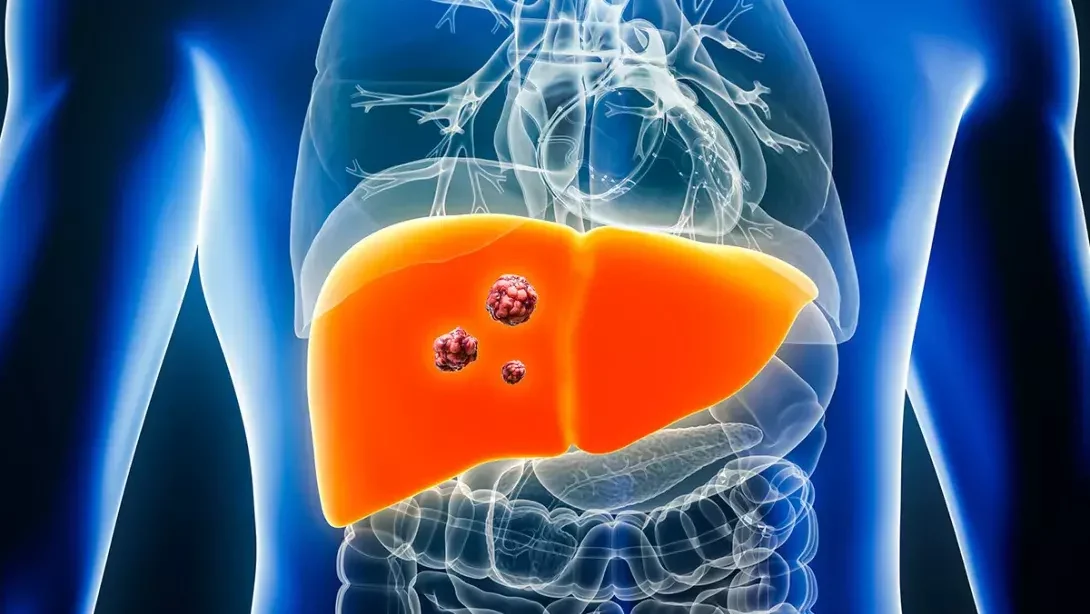Senthil Kumar, Medical Oncologist at Red Hills, Chennai, posted on X:
“First-Line Therapy in HCC: The New Era of Choices.
- IMbrave150: Atezolizumab + Bevacizumab (Atezolizumab: 1200 mg IV + Bevacizumab: 15 mg/kg IV)
- Frequency: Every 3 weeks
- Overall Survival (OS): 19.2 vs. 13.4 months (HR 0.58)
- Progression-Free Survival (PFS): 6.8 vs. 4.3 months (HR 0.59)
- Objective Response Rate (ORR): 27% vs. 12% (p<0.0001)
Pros: Significant survival advantage and improved quality of life. Dual mechanism: Bevacizumab targets VEGF, Atezolizumab blocks PD-L1.
Cons: Requires EGD screening for varices in cirrhotic patients due to bleeding risk.
2. HIMALAYA: Durvalumab + Tremelimumab (Durvalumab: 1500 mg IV + Tremelimumab: Single dose of 300 mg IV)
- Frequency: Durvalumab: Monthly; Tremelimumab: Single dose
- Overall Survival (OS): 16.4 vs. 13.8 months
- 5-Year Overall Survival (OS): 19% (Durvalumab + Tremelimumab)
- Objective Response Rate (ORR): Improved significantly with combination
Pros: Simplified dosing schedule. Well-tolerated with effective long-term outcomes.
Cons: Limited impact on PFS (no significant difference).
- CARES-310: Camrelizumab + Rivoceranib (Camrelizumab: 200 mg IV + Rivoceranib: 250 mg oral daily)
- Frequency: Camrelizumab: Every 2 weeks; Rivoceranib: Daily
- Overall Survival (OS): 23.8 vs. 15.2 months (HR 0.64)
- Progression-Free Survival (PFS): 5.6 vs. 3.7 months
- Objective Response Rate (ORR): 26.8% vs. 5.9%
Pros: Strong OS and PFS improvements over sorafenib. Combines anti-PD1 and VEGFi for robust efficacy.
Cons: High rate of grade 3-4 adverse events (AEs), requiring close monitoring.
4. CheckMate 9DW: Ipilimumab + Nivolumab (Ipilimumab: 3 mg/kg IV + Nivolumab: 1 mg/kg IV)
- Frequency: Every 3 weeks (Ipilimumab: 4 doses only)
- Overall Survival (OS): 23.7 vs. 20.6 months (HR 0.79)
- Progression-Free Survival (PFS): Both arms 9.1 months
- Objective Response Rate (ORR): 36% vs. 13%
- Duration of Response (DoR): 30.4 vs. 12.9 months
Pros: Long-lasting responses with durable outcomes. Anti-CTLA4 and PD1 synergy offers a unique therapeutic benefit.
Cons: Higher incidence of immune-related adverse events (AEs).
Summary of Insights
- Atezolizumab + Bevacizumab: A solid foundation with survival and QOL benefits, setting a standard for VEGFi + PD(L)1 combinations.
- Durvalumab + Tremelimumab: One-dose CTLA4 boosts long-term survival, with impressive 4-year OS data.
- Camrelizumab + Rivoceranib: Newer combo showing exceptional OS and PFS.
- Ipilimumab + Nivolumab: Anti-CTLA4 + PD1 synergy demonstrates durable responses and long-term outcomes.
Choosing the Right Regimen
- For Patients with Varices or Bleeding Risks: Avoid Bevacizumab; consider Durvalumab + Tremelimumab or Ipilimumab + Nivolumab.
- For Aggressive Tumors with High AFP: Anti-CTLA4 combinations (e.g., Ipilimumab + Nivolumab) show promise.
- For Patients Prioritizing Oral Therapy: Camrelizumab + Rivoceranib offers strong survival data.
Future Directions
- Long-Term OS Data: Expected from newer combinations like Camrelizumab + Rivoceranib.
- Combinations with VEGFi: Can these replicate long-term survival seen with anti-CTLA4 combos?
- Biomarker Integration: Better stratification of patients using AFP, PD-L1, and immune profiling.
The HCC landscape has transformed into a multi-faceted arsenal of immunotherapy and TKI combinations. Each regimen offers unique strengths, but patient selection based on liver function, tumor biology, and comorbidities remains key.”
